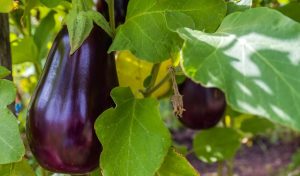Gardeners are always looking for ways to improve their gardens.
One popular method is using raised beds.
Raised beds have many benefits including improved drainage, fewer weeds, and easier access for people with limited mobility. But what if there were a way to make raised beds even better?
Enter Hugelkultur.
A Hugel bed is a type of raised garden bed that is built using woody debris and organic matter. The materials are arranged in such a way as to create a large, deep bed that can be used to grow vegetables, fruits, and other plants. Hugel beds are often used in permaculture and forest gardens as they help to increase water retention, improve drainage, and provide a homes for beneficial insects and microorganisms.
What is a Hugel bed?
A hugel bed is a type of garden bed that is built using logs, sticks, and other organic materials.
The word “hugel” comes from the German word meaning “mound” or “hill.”
Hugel beds are often used in permaculture gardens because they are efficient in terms of water and nutrient use, help to build soil health, and can provide homes for beneficial insects.
Benefits of Hugel beds
There are many benefits to growing plants in a hugel bed.
The most obvious benefit is the increased depth of the bed, which allows for deeper root systems and more space for plant growth.
Additionally, hugel beds can help to increase water retention in the soil, which is especially beneficial during times of drought.
The woody materials used to build the beds also break down over time, providing nutrients and minerals that are essential for plant growth.
Another benefit of hugel beds is that they provide homes for beneficial insects and microorganisms.
These organisms help to aerate the soil, improve drainage, and control pests.
In turn, this can lead to healthier plants with less need for chemicals or other inputs.
They help to conserve water by acting as a sponge and releasing water gradually over time.
They improve soil health by providing homes for beneficial microbes and fungi.
They can provide homes for beneficial insects like ladybugs and bees.
They help to sequester carbon dioxide from the atmosphere.
They provide insulation for plants during extreme weather conditions.
They can increase crop yields due to the improved growing conditions.
They can be used to grow a wider variety of plants due to the improved drainage and aeration.
They are beautiful and can add interest and dimension to your garden.

Building a Hugel bed
Building a hugel bed is relatively simple and can be done using materials that would otherwise be discarded.
The first step is to find a location for the bed.
It is important to choose an area that gets at least six hours of direct sunlight per day and has well-draining soil.
Once you have chosen a location, mark out the area where you will be building the bed.
The next step is to gather your materials.
You will need logs or branches that are at least 18 inches long, as well as organic matter such as leaves, grass clippings, or compost.
If you have access to straw or hay, this can also be used. Once you have gathered your materials, it’s time to start building.
Start by making a layer of logs or branches on the ground.
Make sure that they are positioned so that they are touching one another, this will help them to decompose more evenly over time.
Next, add a layer of organic matter over top of the logs/branches.
This layer should be 3-4 inches deep.
Finally, add a layer of topsoil or compost on top of the organic matter, this will be where you plant your seeds or seedlings.
What can you grow in a Hugel bed
Almost any type of plant can be grown in a hugel bed, although some plants will do better than others.
Plants such as tomatoes, peppers, eggplant, squash, and beans are all well-suited to growing in hugel beds.
Fruits such as strawberries, blueberries, raspberries, and blackberries can also be grown in these beds.
Herbs such as basil, oregano, rosemary, and thyme will also do well.
When planting your seeds or seedlings, make sure to space them out evenly across the bed.
Water the bed deeply once everything has been planted.
Once your plants have started to grow, you can add mulch around them to help retain moisture and suppress weeds.
Final Words
Hugel beds are an excellent way to grow plants while using materials that would otherwise be discarded.
They help to increase water retention in the soil, improve drainage, and provide homes for beneficial insects and microorganisms.
They can also help to improve your gardening space and increase crop yields due to the improved growing conditions.
Building a hugel bed is relatively simple and can be done using materials that can be found around most properties.
If you have the space and materials available, we encourage you to give hugel bed gardening a try.






